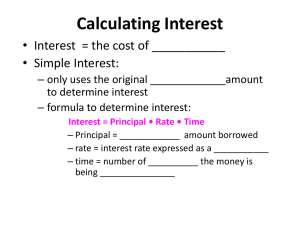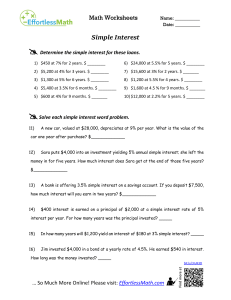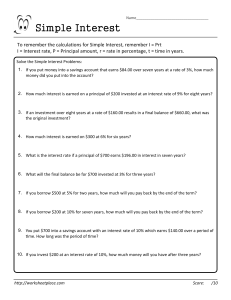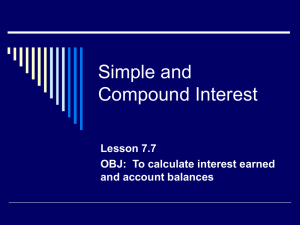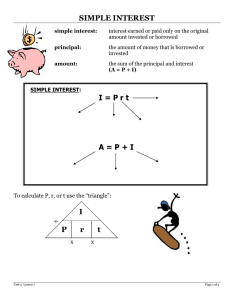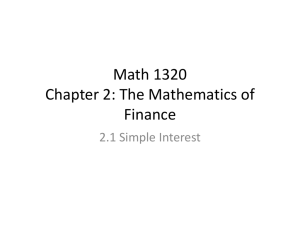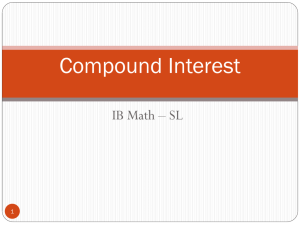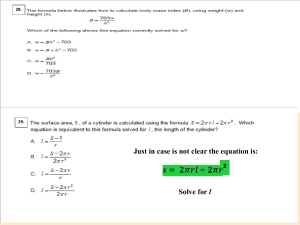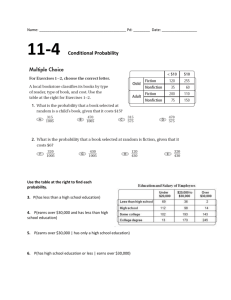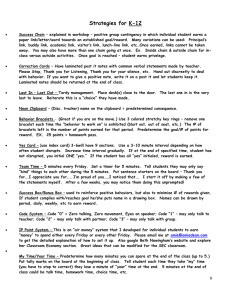View Notes as PowerPoint Presentation
advertisement
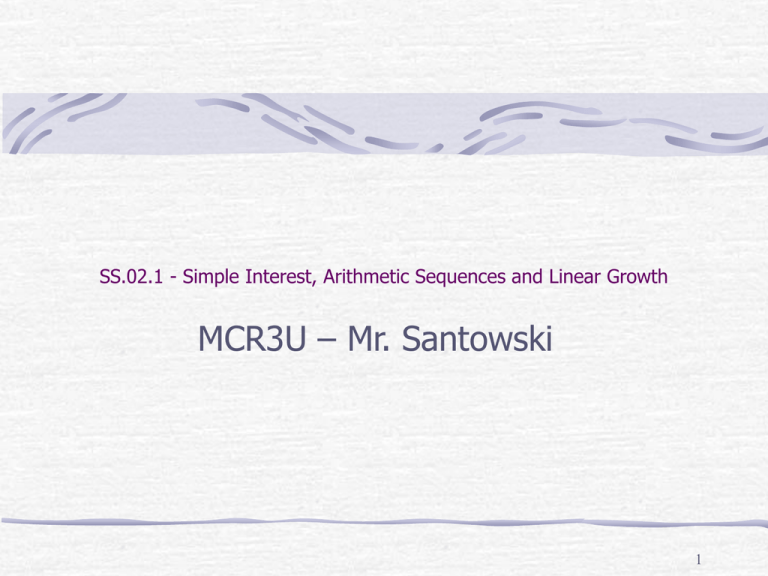
SS.02.1 - Simple Interest, Arithmetic Sequences and Linear Growth MCR3U – Mr. Santowski 1 (A) Definitions Simple interest means that only the principal invested earns interest Principal means the original amount invested or borrowed Rate refers to the interest rate being paid as a percent usually per year (per annum) The amount of the investment refers to the total of the principal and the interest being paid 2 (B) Formulas for Simple Interest I = Prt where I is the interest earned, P is the principal invested, r is the interest rate being earned (usually per annum), and t is the length of time that the principal earns interest (usually in years) A = P + I where A is the total amount of the investment which is the sum of the original principal and the interest earned upon combining A = P(1 + rt) 3 (C) Examples I=? P=$2500 I=? P=$1200 I=? P=$3000 I=? P=$2000 I=? P=? I=? P=? r=3.75%/a r=4.25%/a r=3%/a r=? r=4%/a r=4.25%/a t=3 a t=6 m t=? t=1½ a t=2 a t=175 d A=? A=? A=$3120 A=$2210 A=$4050 A=$1200 4 (D) Simple Interest as Sequences If you invest $1000 for 10 years which earns 5% pa simple interest: (I) Determine the value of the total investment at the end of each year for the next 10 years. (ii) List the terms and determine the general term. What type of sequence is this? (iii) Graph the sequence with an appropriate choice of axis. (iv) Explain why simple interest is an example of “linear growth” 5 (D) Summary – Part 1 (i) => if you list the investment amount yearly, you get the sequence (1000?), 1050, 1100, 1150, 1200,...1500 which we can write as tn = a + (n - 1)d or tn = 1050 + (n - 1)50 or tn = 50n + 1000 6 (D) Summary Part 2 – The Graph 7 (E) Homework Handout, page 263, Q1,3,5,6,7 8
